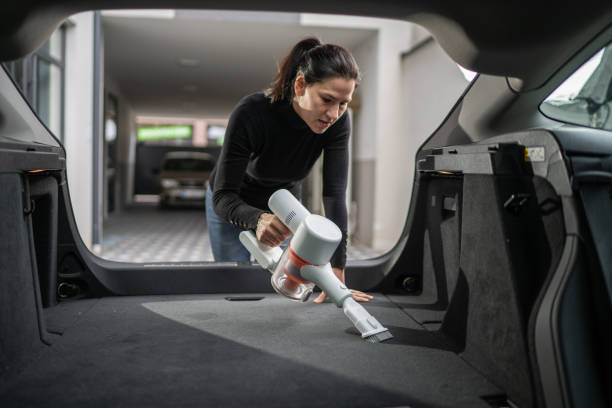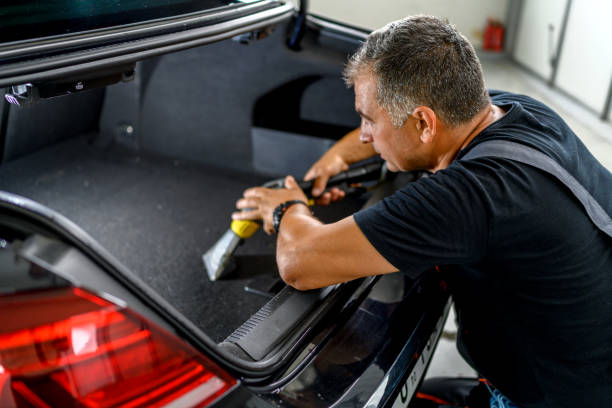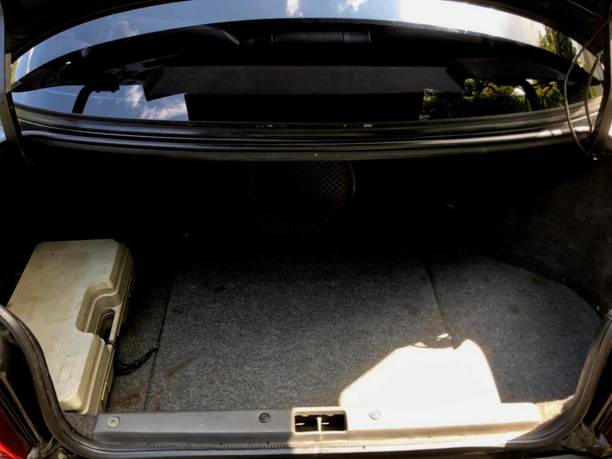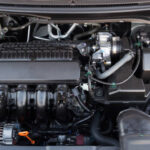The last thing you want in your car trunk is the gasoline that has been unintentionally spilled. It would be an unpleasant mess that could cause lung damage, headaches, dizziness, and carbon monoxide poisoning.
However, it can occur when the gas tank for your lawnmower or another vehicle is in the trunk of your car.
You should take the action to clean up a gas spill in a car trunk right away if that were to happen to you. Absorbing the spill, applying a solution to the stains, drying the trunk, and getting rid of any lingering odor are all steps in the process.
Additionally, gasoline’s oily nature makes it challenging to clean up when spilled. As a result, to effectively clean up the gas spill, you need a multifaceted strategy. We discuss how to clean up a gas spill in your car trunk in this post.
What You Will Need to Follow This Tutorial
- Face mask
• Old clothes, rags, and towels
• Spray bottle
• Carpet cleaner
• Vinegar
• Coffee ground
• Baking soda
• Kitty litter
• Brush
• Vinegar
• Fan
• Vacuum cleaner
Ascertain that you have all the necessary tools close at hand before beginning the cleaning process. To shield your mouth and nose from the gas fumes, put on a face mask. Start cleaning up the spill after you have parked your car in an open area with good ventilation, such as your driveway or the street.

Step-by-step Guide
1. Practice Safety Precautions before cleaning
To avoid its negative effects, you must exercise caution when handling gas that has spilled into the trunk. The first safety measure you should take is to park your car somewhere open, such as a driveway or a public street, so that you can clean in a well-ventilated area.
Covering your mouth and nose with a face mask or any other piece of cloth you can use as protection is another way to prevent its damaging effects.
2. Locate the Gasoline Spill
By sniffing the area around your car trunk, you can locate the gasoline spill. Remembering where you put the gas tank after you bought it would also be useful. You can also check for gasoline by feeling around the trunk for any damp spots, but do so after washing your hands.
3. Absorb the Gasoline
Before cleaning the trunk of the car, try to get rid of as much gasoline as you can. You can apply some rags or anything else absorbent, such as paper towels and newspapers, to the gasoline spill.
You’ll then dispose of the leftover gasoline that ended up in your car’s trunk. You would first deal with it by lightly misting some water on the impacted areas. Water repels oil, so this will cause the gasoline to loosen.
The following step is to cover it with a thin layer of salt, cornmeal, or cat litter. After 30 minutes, leave it on the affected areas to draw the gasoline from the trunk. After that, wipe everything away.
4. Cleaning the Gasoline Spill With the Preferred Cleaning Solution
As was already mentioned, there are several cleaning solution options for a gasoline spill.
The majority of cleaning solution options have a similar application and usage procedure, especially the carpet shampoo, vinegar/club soda/dishwashing liquid solution, and dishwashing liquid/borax/boiling water solution. Utilizing a nylon brush, all that is required is to apply and massage the solution into the troubled areas.
However, if you’re using water, baking soda, and vinegar solution, you should first spray some water on the troubled areas. After that, sprinkle some baking soda and vinegar on them, and use a towel or sponge to rub the areas clean. Deep-rooted odors would be eliminated as a result of the foaming reaction that would result.

5. Dab Out the Moisture and Stains and Let the Trunk Air Dry
After removing the stains with a scrubber, use clean, unused rags to dab away any remaining moisture. Next, leave the trunk’s door open to let air dry the contents.
To hasten the drying process, if at all possible, expose it to the heat of the sun or point a fan at it. Check to see if there is any remaining gas on the trunk of your car after the trunk has fully dried. You would need to do the cleaning over again if there was.
6. Eliminate Lingering Odor
If you cleaned your car’s trunk, there might still be a lingering smell. One solution is to sprinkle baking soda on the trunk, let it sit for a few hours to absorb the smell, and then vacuum it up. Repeat the application until the smell has vanished if it persists.
You can also leave some coffee grounds in the smelly area in the trunk to mask it. However, before vacuuming, you would need to store them in the trunk for about a week.
Kitty litter is an option that can work somewhat more quickly; it can get rid of the odor in one to two days. By then, you can vacuum it up. However, if the trunk remains smelly afterward, reapply some kitty litter.
7. If the Gas Smell Persists, Replace the Trunk’s Carpeting
In particular, if your car doesn’t have a separate trunk from its body but rather more of a rear cargo area, you wouldn’t want to be driving around in a car with a gasoline smell that could harm you or any of the passengers in it.
The last resort would be to replace the carpeting in the trunk if the odor in your car persisted despite extensive cleaning, deodorizing, and repetition.
8. Protect the Trunk’s Carpeting With a Waterproof Rubber Trunk Liner
A waterproof rubber trunk liner would be a smart idea to protect the carpeting in your car’s trunk if it is prone to spills. It would make cleanup much simpler in the future.
Summary
Gasoline spill cleanup could take up a lot of your time! Fortunately, using the appropriate tools and techniques—as described above—will help you repair your car trunk after such a spill. The aforementioned tutorial offers a step-by-step process for helping you finally get rid of the gasoline spill that has been bothering you for weeks.



